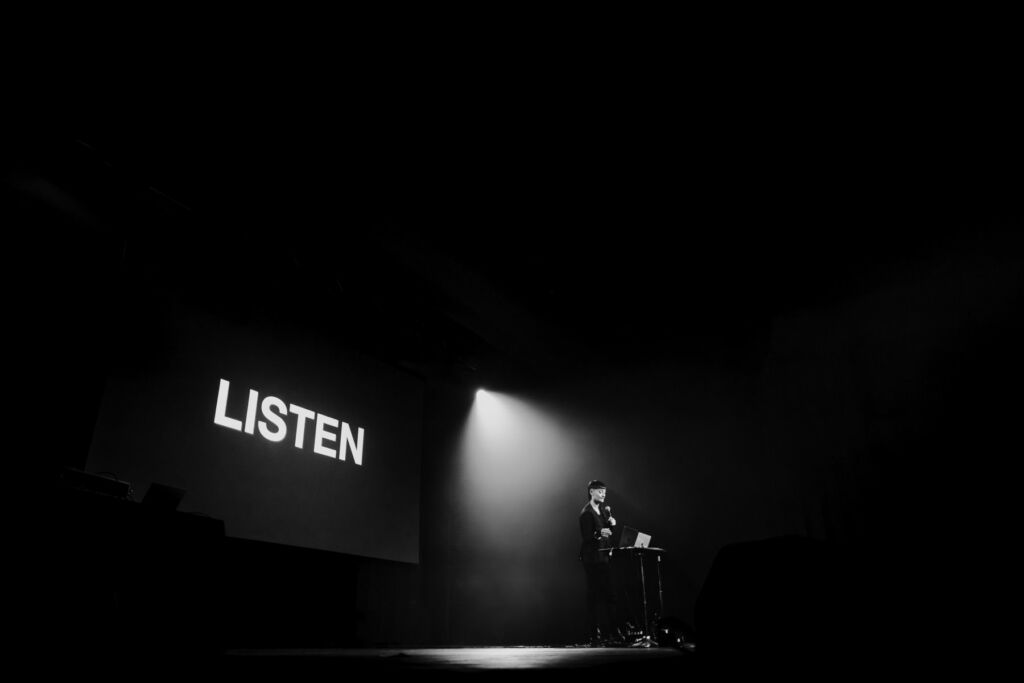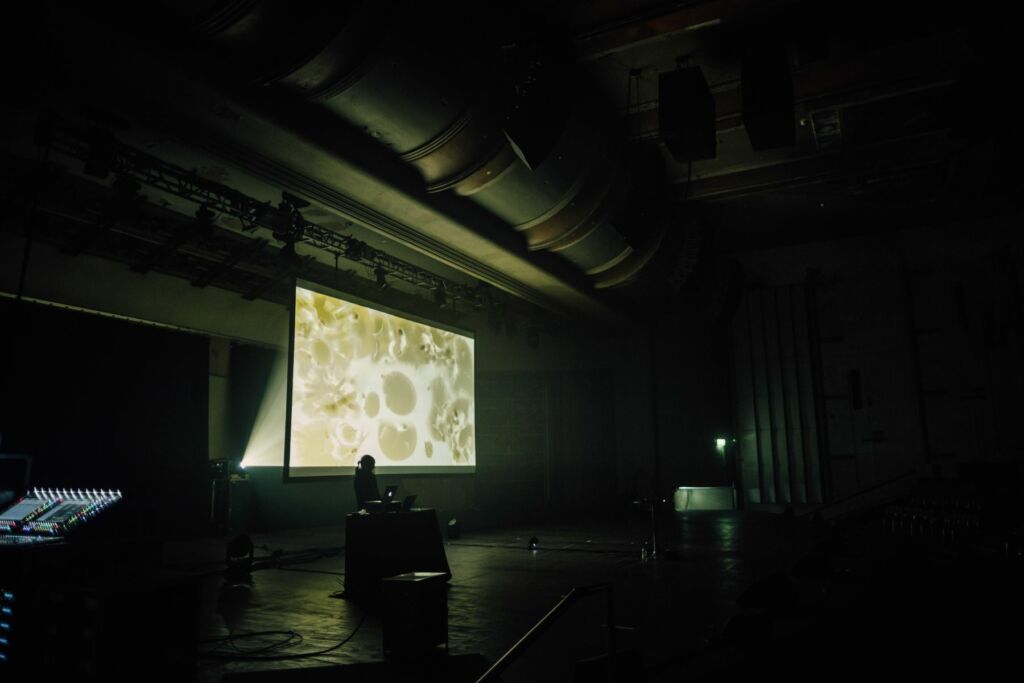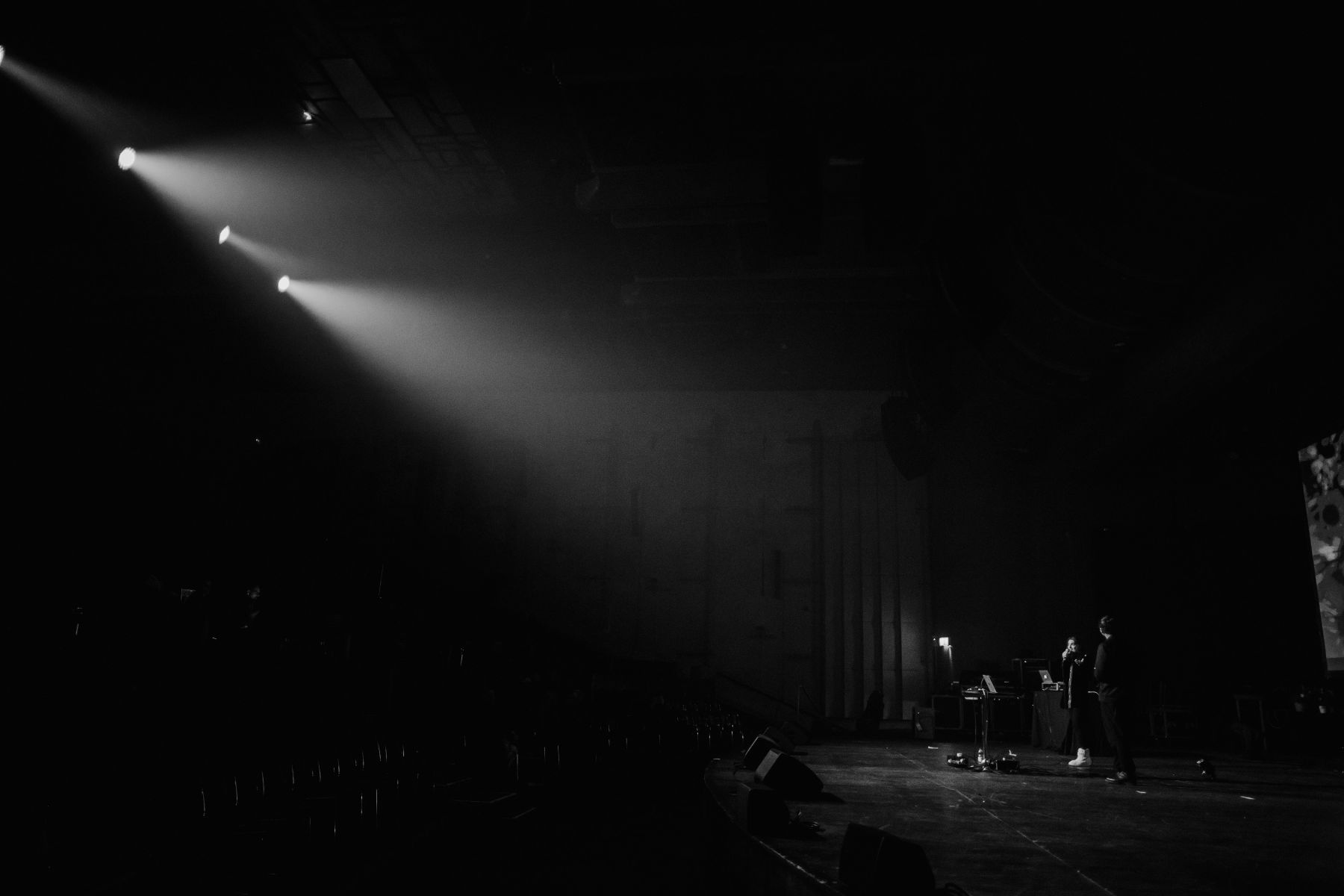Text by Agata Kik

Music being the method to instigate social change while spreading the sound and its skilful employment to search for a better new world, FutureSound advocate.
As a curatorial platform that aims to share sonic experiences and disseminate sound’s transformative potential, FutureSound reimagine music and inspire sound enthusiasts, including makers, thinkers, healers, artists and scientists globally, to showcase the latest technological innovations and unique insights into working with sound, affecting others with its revolutionary resonance.
The latest event in their ‘The Future is Sound’ series is Junkerry’s Amaurosis, which was dedicated to exploring spatial distribution of sound; it was organised in collaboration with professional sound system manufacturer L-Acoustics and presented at EartH (Evolutionary Arts Hackney) on the 6th of December 2022.
Founding Partner of FutureSound Jimmy Kyriacou shared with us that not only is spatial audio going to reinvent the way we experience music, but it’s also going to have a huge impact on how most people think about sound. With spatial technology, music can take you to a place you never imagined. We’re at a time in history when music, entertainment and the well-being industries will be totally transformed by the power of sound. Many people ask me, is this a new innovation? No, not really; our ancestors knew these thousands of years ago!
With an overarching theme of The Art of Listening, the event took the form of an experiential and educational evening of expert talks, performative presentations and displays of technology, culminating with a blindfolded experience of a 3D sound work by Junkerry titled Amaurosis. The event was also organised in partnership with OpenLab, founded by electronic music pioneer, composer and DJ Robert Miles.

Guillaume Le Nost, the Managing Director of L-Acoustics, presented to the EartH’s audience some of the most ground-breaking art projects and the technology that spatial sound and its quality of immersivity have been delivered with. We could visually follow the mic’d up subject moving on the stage while the sound system played a trick on our cognitive brains, confused by the disembodied voice interchangeably coming from all different directions inside the room.
In awe, the audience was made aware of the illusionary power of manipulating sound’s source by absorbing the sound waves coming from underneath their seats, from left or right or high up and then just there in the middle at the moment when they heard voice met the voice that was actually coming from the body.
The night was opened with an immersive experience by Natural Symphony that used plants, synthesisers, and biofeedback to establish collaboration between the organic and the synthetic, giving plants some slight agency to create in collaboration with a human being. Artist Hannah Marshall invited the viewer to have a look at the voice and its power to cut through noise. Have you realised that LISTEN is the same as SILENT but with rearranged letter order? A different symbolic combination yields the same experiential state – to listen in silence is the skill of being present.
Like the breaths of the audience members sitting on this coldest night that year in London in the freezing theatre chilled down to the bones, the voice is like the amplified steam leaving wet mouths; it is the bridge between the outside and the space within. Connecting the mind with the body, we learnt that there is also a way to preserve one’s voice by turning it into a digital gemstone. Designed by REEPS100 and Trung Bao, VOICE GEMS is a 200,000-particle system that turns recordings of human voices into unique 3D digital objects and physical sculptures. The most ephemeral and visceral and yet voice can be solidified and looked at from the outside.
In Greek, ‘amaurosis’ means dark; Amaurosis fugax refers to transient vision loss. To look at the world without judgement and without naming everything means to see through the skin, to listen through the physicality’s porosity and to be present and attentive to the embodied self. The night culminated in a 40-minute 360° sound experience of Amaurosis performed by artist Junkerry.
Living between Europe and Asia, the artist has worked from a converted convent in France, bringing to the audience experiences of liminal worlds that spatialized sound has the power to awaken and illuminate in the virtual voluminosity of the physical world.

As a composer, musician and producer, Junkerry records all her works in her 3D sound studio. So the depth of space is an intrinsic part of her art practice, expanding far beyond the 2-dimensional stereo standards of working with sound through the screen. Sensing the sculpturality of sound, while using space as an instrument, considering the movement of sound across the room, for Junkery, music-making feels more like choreography with sound almost as a dancer waving sonic ribbons across the invisible stage suspended in space.
Having benefited from the EartH’s state-of-the-art L-ISA Immersive Hyperreal Sound Technology, the artist commented that her Amaurosis project (…) in the dark subverts the law of perception, blindfolded the music reveals a new world. I work with space as a native element of my compositions from their inception, thinking as a sculptor, sometimes a dancer, as the music is choreographed on many sources.
I’ve been composing in spatial for nine years, using my voice, electric guitar and instruments like tabla, cello and flute as organic elements rather than adding a digital layer. There has been lots of talking about immersive sound, so it’s exciting that producers and venues are now seeking truly spatial performances for audiences.
With such phenomenal performances like Amaurosis, FutureSound arouse audiences and combat the culture fixated on a flat image by bringing attention back to the depth of sound, the human sense of hearing and the skill of listening to finally give significance to the human sensation that is predominately physical rather than cognitive, and whose potential is seriously underestimated in the capitalist contemporaneity. We are always receiving the affective abundance from everywhere; we never leave space or the skin; immersivity of new technology is a brilliant bridging tool to bring audiences closer to the artists and let everyone share the same dream.






